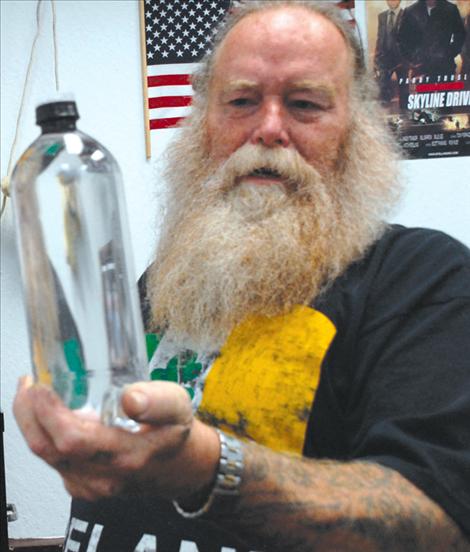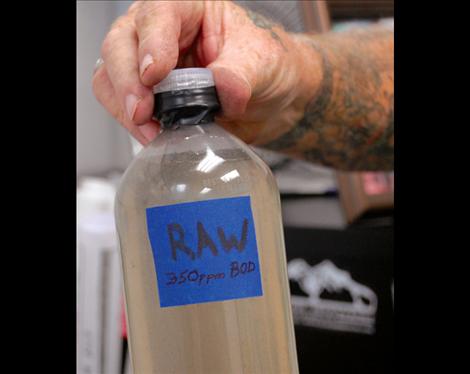City of Polson plans new wastewater treatment facility
Hey savvy news reader! Thanks for choosing local.
You are now reading
1 of 3 free articles.
POLSON — “We did a 10-year Band-Aid 12 years ago, and now the Band-Aid is falling apart,” said Tony Porrazzo, city of Polson water superintendent.
Porrazzo was talking about wastewater treatment system improvements, which is not a new issue.
The Polson City Commissioners will be faced with a big decision regarding a new wastewater treatment system at the commission meeting on April 21 after delving into the issue at a special public meeting held Monday, April 14.
An informational PowerPoint that was shown before the April 7 meeting is available on the city’s website at www.cityofpolson.com.
The current lagoon-based treatment system was built in the 1950s and added onto over the years. Since the current system doesn’t have much growth potential, there are two choices, Porrazzo said.
Option one is an Intermittent Cycle Extended Aeration System. Advantages are less equipment and instrumentation, less expensive equipment, lower operating costs and possible phasing to add filtration later.
Disadvantages are that a future filtration process is required, the effluent water is of lower quality and it requires larger tanks, which are typically not in a building. This system also is more susceptible to variable effluent quality.
Option two is a Membrane Bioreactor. Advantages for the membrane include that no future unit processes are required for filtration, the enclosed portion of the process could be outside and it provides the highest quality effluent. It requires more equipment and instrumentation, more expensive equipment and has higher operations costs.
The preliminary costs are estimated at more than $15,742,800 for the SBR system with filtration and $18,334,800 for the MBR system.
Since Polson is located on the Flathead Indian Reservation, Porrazzo said the city of Polson has to follow federal Environmental Protection Agency regulations.
“The federal regs are becoming very, very strict,” Porrazzo said.
For instance, the EPA has mandated that by 2017 a disinfection effluent system must be in place.
Lori Benner from Nittany Grantworks has been hired by the city of Polson to write grants for the project. Benner is looking at several funding sources. One is the Treasure State Endowment Program grant, which is due on May 2. Polson would be allowed to apply for $750,000. It’s a dollar for dollar matching grant.
Another is the Montana Renewable Resource Grant and Loan Program, and Benner plans to apply for $125,000. It doesn’t require matching funds. The grant is due May 15.
Another possible source of money is a Montana Community Development Block Grant. The next grant cycle is due on April 2, 2015. Benner would write the grant for $450,000 and it requires a 25 percent match or $112,500.
Then there are low interest loans, such as the Montana State Revolving Loan Fund with a rolling deadline and a current interest rate of three percent.
Benner will be looking into as many other grants and loans as possible.
There will also be a rate increase. Preliminary numbers show that if the project is funded solely by loans — the worse case scenario without any grant funding — the average sewer user will pay an additional $59.84 per month for SBR w/filtration and $64.82 per month for MBR.
Currently the average overall sewer rate is $29 per month, so with the increase, residents may have to pay between $88.84 and $93.82 per month.
With $2,325,00 in TSEP, RRLG, CDBG and other grants, the average sewer user will pay an additional $52.96 for the SBR system w/filtration and $58.40 for the MBR option.
“Potential rate increases are going to be pretty large, that’s why we’re trying so hard to identify any grant funding we can,” Porrazzo said.
The project schedule shows the summer of 2014 for equipment procurement for the project and design. The project would be bid out and constructed beginning in the spring of 2015. The wastewater treatment project would be bid out in the spring of 2016 and constructed before July of 2017.
“I think myself that the general population of Polson wants to take care of Flathead Lake and the river. It’s our treasure; we have to take care of it,” Porrazzo said.
Since the life cycle of water and sewer systems is 15 years and the City may need to add onto the new system, the City will probably look at adding a small rate increase each year to put aside to pay additions.
“The Polson City Commission is going to have to direct us on a preferred alternative,” said Shrives. “ ... The commission has a very difficult decision and not a lot of options. We’ve got regulations that are changing (and) aging lagoons. We’re right there, and a decision has to be made.”

















